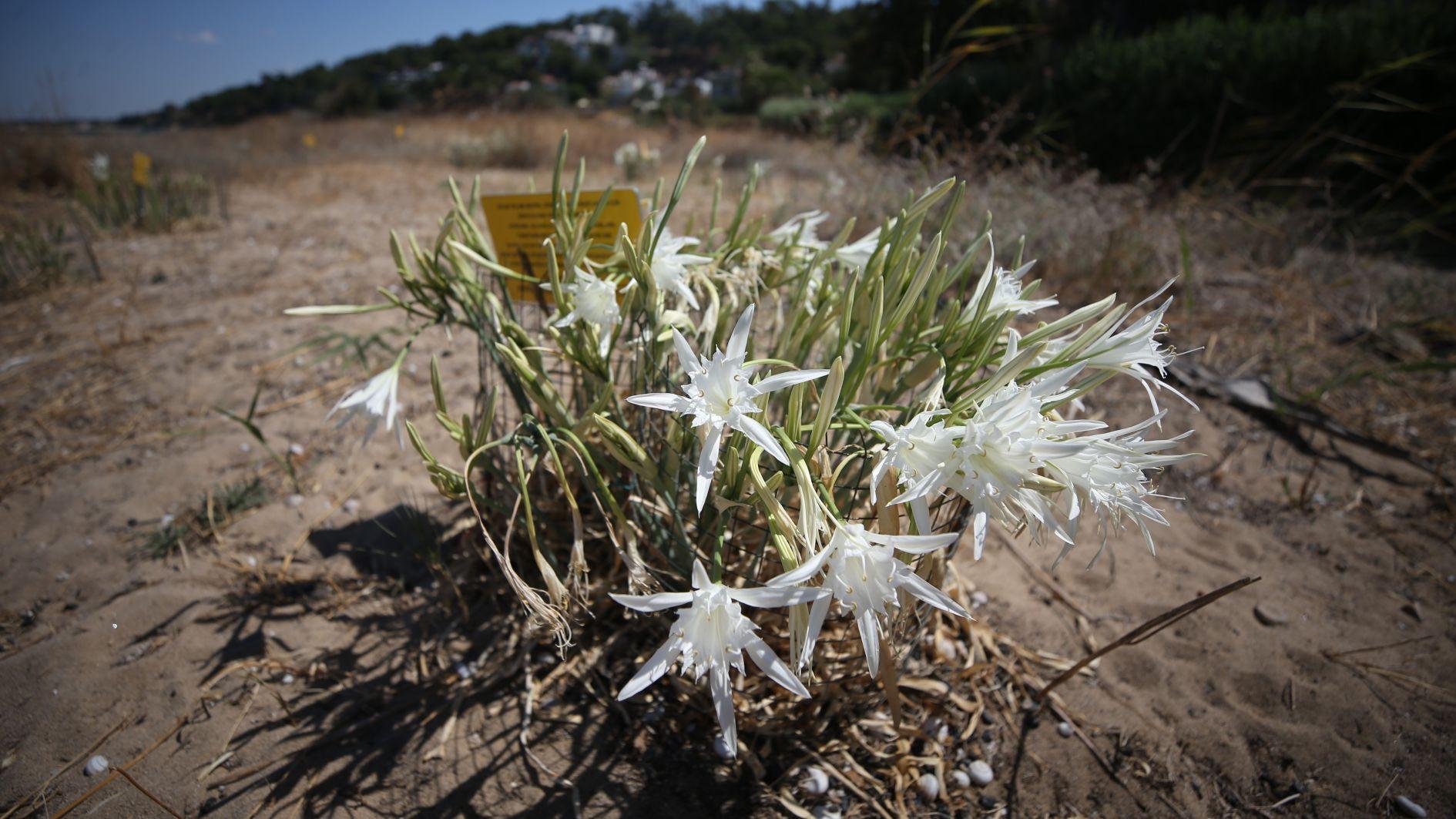
The delicate sand lilies adorning the coastline of Alexandria Troas, an ancient city in the Ezine district of Çanakkale, are being carefully protected against damage. Local residents, along with authorities, have set up wire fences and placed informative signs to raise awareness about the rare flowers.
The lilies, which hold a special place in Greek mythology, bloom in white from August to October, adding beauty to the shores and spreading their fragrance at night. Along the beach where the city’s ancient harbor lies in Dalyan village, locals have taken the initiative to fence off the area to prevent harm to the species.
According to the Environmental Law, anyone caught picking the sand lilies faces an administrative fine of 557,212 Turkish Liras.
Erhan Öztepe, head of the Alexandria Troas excavations, told Anadolu Agency that archaeological sites should be preserved along with their natural surroundings. “The residents of Dalyan village are very sensitive about protecting the plant. Anatolia is rich not only in archaeology but also in botany. Just as we protect cultural heritage, we must also safeguard its natural landscape. These endemic species must not be destroyed,” he said.
Onur Sinan Türkmen, a faculty member of Çanakkale Onsekiz Mart University’s Department of Field Crops and president of the Chamber of Agricultural Engineers in Çanakkale, said the species has been declining due to habitat loss along coasts, which led to its inclusion on the International Union for Conservation of Nature’s protection list.
Native to Mediterranean countries, sand lilies can be found on coastal dunes along the Mediterranean, Aegean, Marmara and Black Sea shores of Türkiye, Türkmen said, stressing the plant’s resilience to drought and salinity.
“As climate change worsens and water sources dwindle, we will need the genetic resources of such plants,” he said. “These lilies thrive in salty, sandy environments with little water. When the demand for salt-tolerant species increases, we must ensure they still exist in our surroundings.”
The sand lily typically flowers between August and September, and in some areas can last until October. Türkmen noted the plant is often found in less disturbed areas where people avoid swimming and particularly at ancient sites.